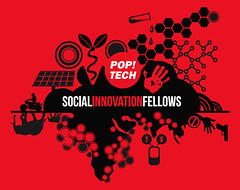ChangeLabs: Design Thinking for the Navajo Nation
/In October 2015, Peter Durand took journey to Gallup, New Mexico to work with native artists and innovators as part of ChangeLabs.
Read MoreIn October 2015, Peter Durand took journey to Gallup, New Mexico to work with native artists and innovators as part of ChangeLabs.
Read More
Alphachimp spent a fascinating day, scribing for and learning about Facebook's research on encouraging people to resolve conflicts and reach out to friends in need.

Speakers pose with Alphachimp's artwork created live from their content.
Facebook has partnered with some amazing experts in human interaction, developmental psychology, emotion science, and evolutionary theory to help people have more meaningful and authentic dialogue and to resolve disputes that might arise.
In line with the mission and core values of Facebook's Compassion team, this public event shares the team's research questions, specifically: How does the perception of a hurtful post by a viewer often widely varies from the intent behind it?
In the words of Dalai Lama himself:
Experience has shown me that the greatest inner tranquillity comes from developing love and compassion. The more we care for the happiness of others, the greater is our own sense of well-being. Cultivating a close, warm-hearted feeling for others automatically puts the mind at ease. It helps remove our fears and insecurities and gives us strength to face obstacles — it is the ultimate source of success in life.
The organizers write: “We are passionate about helping people cultivate and express this compassion in interactions both on and off Facebook, and we are honored to have the opportunity share what we've learned.”
| resilience defined | conference recap | alphachimp artwork | photos |
In a world fraught with disruptions, what causes some systems, organizations, communities and people to break down and others to bounce back? For those that rebound, what do they tell us about how to build a secure future, and sturdier selves to inhabit it?
 The Harpa Concert Hall & Conference Centre in Reykjavik, site of PopTech
The Harpa Concert Hall & Conference Centre in Reykjavik, site of PopTech
To explore these pressing questions, in June 2012 PopTech convened its first international conference outside its homebase in Camden, Maine. Over 200 researchers, practitioners and thought leaders—working in fields such as international development, global business, climate adaptation, social psychology, economics, systems ecology, public health, emerging technology, disaster relief and community activism—gathered in the world-reknowned Harpa concert hall in Reykjavik for a dialogue about the emerging field of "resilience".
 Along with a cadre of stellar design professionals, educators, communication gurus, and experts in social enterprise, Peter Durand of Alphachimp served as faculty and scribe for this amazing weeklong program.
Along with a cadre of stellar design professionals, educators, communication gurus, and experts in social enterprise, Peter Durand of Alphachimp served as faculty and scribe for this amazing weeklong program.
Each year, PopTech selects 10-20 high potential change agents from around the world who are working on highly disruptive innovations in areas.
Peter Durand from Alphachimp @ Pop!Tech from Poptech on Vimeo. Peter Durand from Alphachimp illustrates Stephen Badylak's lecture on regenerative medicine. From Pop!Tech Blogger Michelle Riggen-Ransom:
If you’re with us in Maine, you’ve probably noticed the colorful illustrations hanging on the walls of the third floor break room. If you’re not, you can take a look at them here.These illustrations are the work of artist Peter Durand of Alphachimp Studio. Peter has set up an easel on the balcony of the Opera House, where he busily creates illustrations that capture the key elements of each presentation.
Peter let me peek over his shoulder while he illustrated a session. It happened to be Stephen Badylak’s talk on The Edge of Medicine. While images of exploded horse faces and dismembered fingers flashed on the screen, Peter managed to turn Badylak’s fascinating lecture on regenerative medicine into the illustration above. Watch a short video of his process here and see how language becomes visual art.
Alphachimp LLC is a visual learning company based in Houston, Texas.
Through drawings, animations, and the design-thinking process we help people understand complex situations and make better decisions.
We provide a cluster of inter-related services in the area of visual learning, graphic facilitation, problem-solving, and innovation.
COPYRIGHT © 2022 ALPHACHIMP, LLC
ALPHACHIMP® and ROCKSTAR SCRIBE® and DOODLES IN MOTION® are registered in the U.S. Patent and Trademark Office.